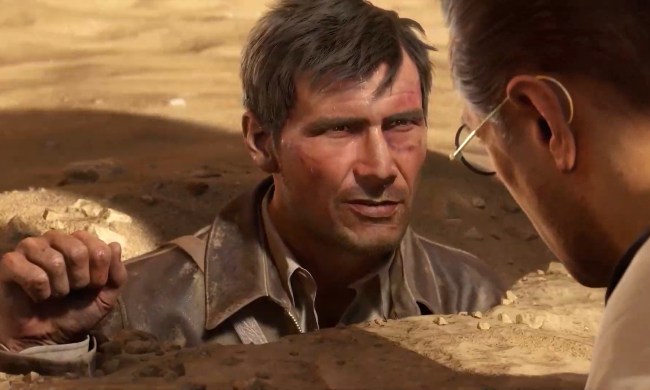
For the first two hours of Senua’s Saga: Hellblade 2, I was fully transported into Senua’s headspace. Every aspect of the sequel’s design was working in concert to pull me into her mind and never let me go. And then I found my first collectible.
I missed out on the first Hellblade, but was familiar enough to know what the general consensus was regarding its strengths and weaknesses. I knew it was a narrative-driven game about a very serious mental health condition. What I never heard about, and thus didn’t know to expect until I came across it, was something as “gamey” as collectibles. In most games, collectibles can be a way to reward exploration, add lore to the world, or simply be an added objective for those who want to do and see it all. In the case of Hellblade 2, however, it’s one small piece of a larger issue: The series’ video game instincts betraying the serious tone and subject matter that the rest of the subversive experience is so committed to.
Wall hugging
At first, Hellblade 2 gripped me like few games have. You already know just how impressive this game is from a visual standpoint from trailers and screenshots, but it’s the 3D audio that pushes it into a league of its own. That first scene of Senua nearly drowning in the ocean while competing voices attempt to encourage and demoralize her instantly established an empathetic link between us. The tight perspective of the camera, the framing of Senua and her detailed facial animations, and the lack of a head-up display (HUD) all made sure that link remained unbroken.
When I found the first collectible — a totem of sorts with a column of runes indicating which one you found and how many more there were — I was thrust out of that mindset. Afterwards I found a second type of collectible that only exacerbated the issue. Unlike the first, which appears off side paths in a very linear game, this second type are hidden behind pieces of the environment that resemble faces if paid attention to. If you spot one, you can then hold down the focus button to reveal a hidden path to the collectible.

From that point on, I couldn’t forget I was playing a game for more than a short stretch of time. Every new area had me walking around all the boundaries in search of a secondary path hiding a secret or second-guessing whether or not I should keep moving forward and risk not being able to return if I had missed something. I shouldn’t be rubbing up against the corners of the map during an emotionally charged scene attempting to show me another layer of Senua’s mental state.
It may sound like a nitpick, but it’s just one element that shows how difficult it can be for a video game to balance difficult, unexplored themes with traditional game design instincts. It’s not that a game can’t offer a serious exploration on psychosis while still offering standard gamification hooks, but Hellblade 2 goes a step too far. The sequel goes to such lengths to connect you with Senua that introducing any elements of a metagame invites players to distance themselves from her. Combat is a better example of compromise in this regard. You do have a light and heavy attack you can do basic combos with, plus a block you can time to parry attacks, but it stays grounded by keeping the screen clear of HUD elements and making all the animations realistically brutal.
Because the themes of understanding and accepting psychosis are exclusively delivered by putting the player in Senua’s shoes, there’s no real way to compensate if anything pulls the player out of that state of mind. Collectibles are too gamey of a concept to coalesce with how seriously Hellblade 2 demands to be taken. If you can, I highly suggest ignoring them on your first playthrough to try and preserve the experience.
Senua’s Saga: Hellblade 2 is out now on Xbox Series X/S and PC.



